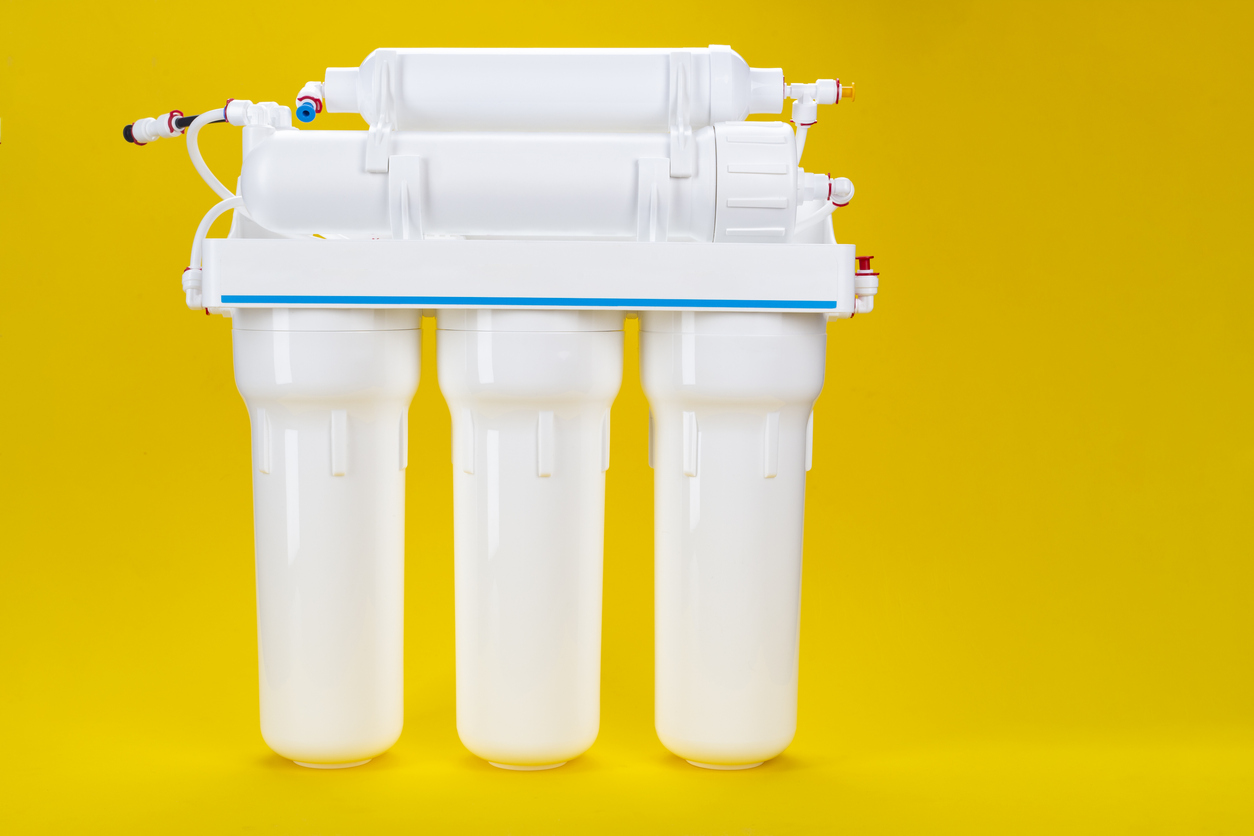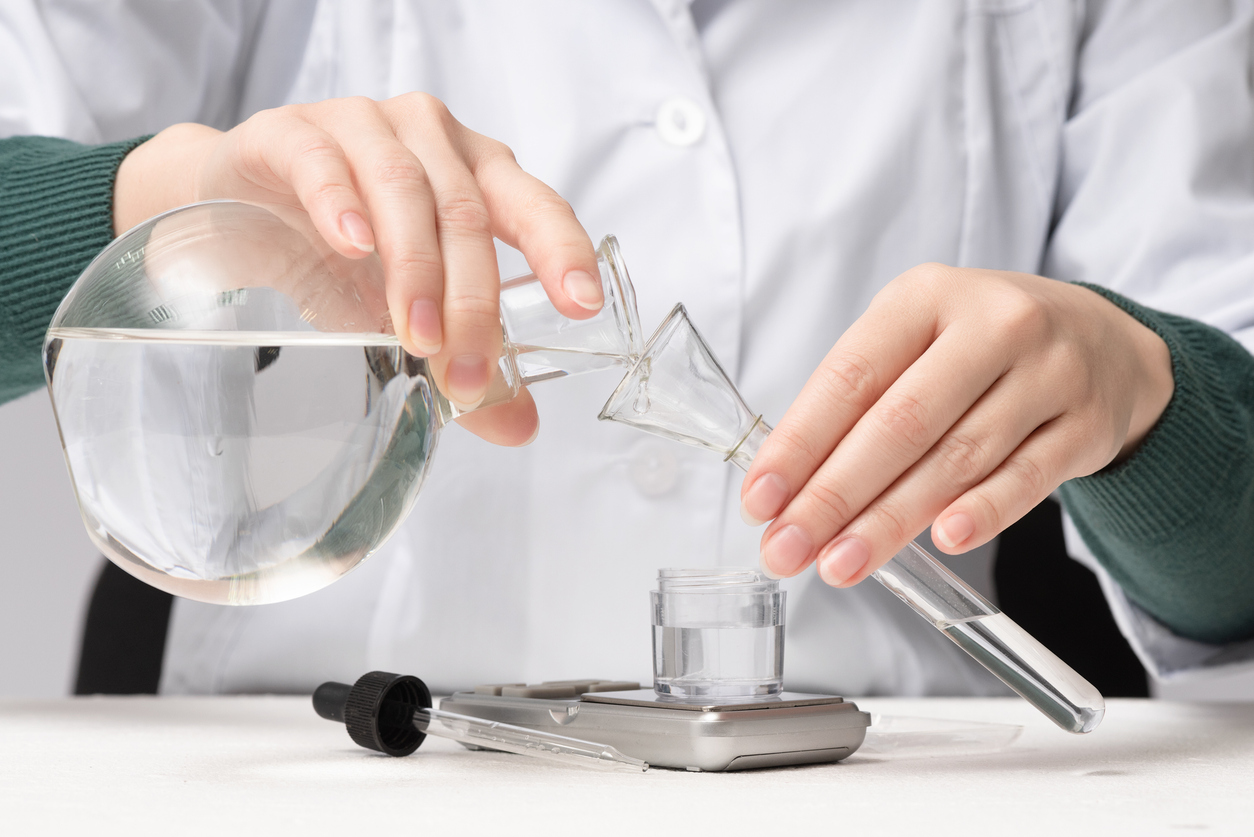Clean drinking water is not always a given. Accidents happen. Living next to certain types of manufacturing plants or other industrial entities may also play a part. Even without industrial neighbors, your water is still likely to have contaminants. There are pre-defined levels of each contaminant present in your drinking water that are considered acceptable to consume. Particles of contaminants like aluminum, copper, lead, and mercury can be found at these levels in most households.
The Water Quality Association summarizes a list of these contaminants that may be present in your drinking water. Their reports also include possible adverse health effects of drinking contaminated water, and different regulations surrounding the contaminants. So, how do you keep your household’s water supply clean with as few contaminants as possible? You may want to invest in a water treatment system.
At a Glance
How can a water filtration system get rid of contaminants?
How are drinking water contaminants measured?
What are the top contaminants in drinking water?
Use a Water Treatment System to Get Rid of Contaminated Water
Unfiltered contaminants can get into the water you drink, bathe in, and wash dishes with. To minimize the presence of these contaminants, consider investing in a water filtration system.
Types of Water Treatment Systems

There are many different types of water treatment systems that can clear contaminants from your drinking water. Some of these systems are only available through municipal use. For the home, the two water filtration systems we recommend are reverse osmosis system and whole house water filtration systems.
Reverse Osmosis Systems
Reverse osmosis systems remove foreign contaminants, solid substances, and other potential pollutants from water before it is dispensed. This is done with added external pressure and a filter that allows cleaner water to pass through, while blocking larger molecules of contaminants.
These systems generally fit under sinks and need a source of water and a sink to dispense water into. Some models come with included faucets, while others will require you to purchase them separately.
Sometimes it is possible to install a reverse osmosis system yourself. However, when you are changing pieces of your plumbing, there are risks. Thoroughly consider your home, needs, and tools. If necessary, call a professional to install your system to ensure you get cleaner water with fewer contaminants.
Whole House Filtration Systems
Whole house filtration systems are units you attach directly to your water line at its entry to your house. This allows you to distribute filtered water to every tap from one central location. Purchasing a single unit as opposed to several smaller units is an easier, more cost-effective way to get cleaner water.
You touch a lot of water outside of your kitchen sink. You brush your sink in your master bathroom, wash your hands in the half bath off the living room, and bathe your kids in their separate bathroom. All that water could be filtered easily with a whole house filtration system.
Understanding Contaminant Measuring Systems
The tap water contaminants we will go over will also list several possible contaminant levels:
MCL - Maximum Contaminant Level: This is the highest level of a contaminant that is allowed in drinking water. This level is assigned to regulate water to minimize adverse health effects from certain contaminants.
SMCL - Secondary Maximum Contaminant Level: These levels are used when the taste, odor, or appearance of water may be adversely affected.
MCLG - Maximum Contaminant Level Goal: The level of a contaminant in drinking water below which there is no known or expected risk to health. MCLs are set as close to this number as possible with consideration to technology and cost.
Action Level: The water facility must test an adequate percentage of the contaminated drinking water to ensure the contaminant does not exceed this level.
Organizations in Water Contaminant Management
US EPA: This organization assigns standards for drinking water quality. They also monitor states, local authorities, and water suppliers.
WHO Guideline - World Health Organization: This organization assigns guidelines to some contaminants as well.
Top 11 Contaminants in Your Drinking Water, Explained

Like we mentioned, the Water Quality Association has a list of contaminants that may be present in your drinking water. They have detailed reports on each contaminant, including possible contaminated water diseases. We’ve covered the top 11 impurities in your
1. Aluminum
Aluminum is assigned an SMCL of 0.05–0.2 mg/L by the US EPA, and 0.1–0.1 mg/L by WHO and Health Canada. In this case, the EPA and WHO agree that aluminum above 0.1 ppm may impact color. However, they recognize that level may not be appropriate for all water supplies.
Health Implications
Studies linking aluminum water to human health issues have been inconclusive.
Treatment Methods
- Distillation
- Reverse Osmosis
- Portable Cation Exchange (Not Recommended)
2. Barium
Barium has an MCLG and MCL of 2.0. mg/L. Some barium in water may cause harmful health effects in people.
Health Implications
Symptoms include difficulties in breathing, increased blood pressure, changes in heart rhythm, stomach irritation, brain swelling, muscle weakness, and damage to the liver, kidney, heart, and spleen.
Treatment Methods
- Cation Exchange
- Reverse Osmosis
- Distillation
3. Cadmium
Cadmium has an MCLG and MCL level of 0.005 mg/L, and a WHO Guideline of 0.003 mg/L.
Health Implications
Cadmium has been found to potentially cause a variety of effects from acute exposures. These include nausea, vomiting, diarrhea, muscle cramps, salivation, sensory disturbances, liver injury, convulsions, shock, and renal failure.
Treatment Methods
- Strong Acid Cation Resin
- Weak Acid Cation Resin
- Reverse Osmosis
- Distillation
4. Chloramine
Chloramine is measured as chlorine levels in drinking water. It is commonly added for the practice of chloramination since 1918. An enforceable MCL of 4.0 was set by the US EPA.
Health Implications
Negative health effects do not appear to be associated with levels of residual chloramines typically found in drinking water. However, chloramines do pose a risk for hemodialysis patients. Chloramines easily enter the bloodstream through the dialysis membrane. Once in the bloodstream, chloramines can cause anemia, which can result in fatalities for hemodialysis patients.
Treatment Methods
- Activated Carbon
- Catalytic Activated Carbon
5. Copper
The US EPA issued an action level that correlates with the MCLG of 1.3 mg/L of copper. This means that water treatment facilities must sample an adequate amount of the water supply to ensure it does not exceed this amount.
Health Implications
Consuming large levels of copper can result in copper poisoning. The most common symptom is gastrointestinal issues. Copper poisoning may manifest as nausea, vomiting, or diarrhea illness, or abdominal and muscle pain. Severe cases of copper poisoning have led to anemia, liver poisoning, and kidney failure.
Treatment Methods
- Reverse Osmosis
- Distillation
- Cation Exchange
6. Fluoride
Fluoride has an MCL of 4.0 mg/L and a WHO Guideline of 1.5 mg/L.
Health Implications
High levels of fluoride consumed for a lengthy amount of time have been found to cause skeletal fluorosis. It has also caused discoloration of the teeth of children under 9 years of age when consumed long-term at 2.0 mg/L or higher.
Treatment Methods
- Reverse Osmosis
- Strong base anion exchange (Cl form)
- Activated alumina adsorption media
- Distillation
7. Lead
Lead has a US EPA Action Level of 0.015 mg/L, an MCLG of 0.00 mg/L, and a WHO Guideline of 0.01 mg/L.
Health Implications
Children are generally more at risk of lead-based health implications than adults. Symptoms include reduced intelligence, impaired hearing, and decreased growth in children. Damage to the brain, kidneys, bone marrow, nervous system, and red blood cells is also possible.
Treatment Methods
- Reverse Osmosis
- Solid Block and Precoat Adsorption Filters
- Strong Acid Cation Exchange (Na form)
- Distillation
8. Nitrates/Nitrites
Nitrates and nitrites are both seen in water as contaminants with several different forms. The MCL and other guidelines vary depending on theform. You can find more information on the WQA Nitrate and Nitrite report.
Health Implications
Many health implications from nitrates and nitrites are limited to babies under the age of 6 months. The most common is blue baby syndrome.
Treatment Methods
- Reverse Osmosis with thin-film composite membrane
- Anion Exchange (Type I and II, Cl form, subject to competing sulfates)
- Nitrate “Selective” Anion Exchange resins
- Distillation
- Electrodialysis
9. Mercury
You may recognize Mercury as the substance in glass thermometers. This contaminant is also a common conversation around fish consumption. Mercury is assigned an HCL of 0.002 mg/L.
Health Implications
Excessive mercury in water can permanently damage the brain, kidneys, and developing fetus. Effects on brain functioning may result in irritability, shyness, tremors, changes in vision or hearing, and memory problems.
Treatment Methods
- Distillation
- Reverse Osmosis
- GAC Filters
- Solid Block & Precoat Filters
10. Selenium
Selenium has an MCL and MCLG of 0.05 mg/L, and a WHO Guideline of 0.04 mg/L.
Health Implications
Consuming high levels of selenium can result in selenium toxicity. In the short term, selenium may cause changes to the hair and fingernails, nervous system damage, fatigue, and irritability. Longer-term exposure can result in hair and fingernail loss, damage to kidney and liver tissue, and problems with the nervous and circulatory systems
Treatment Methods
- Activated alumina adsorption
- Strong base anion type I Cl- exchange
- Distillation
- Reverse osmosis
11. Uranium
Uranium is a naturally occurring mineral that carries an MCLG of 0 mg/L, and an MCL and WHO Guideline of 0.030 mg/L.
Health Implications
Uranium has a demonstrated toxic effect. Exposure can result in kidney inflammation and changes in urine composition. Decayed uranium can turn into radioactive substances, exposure to which, over the long term, can lead to cancer.
Treatment Methods
- Strong Base Anion Exchange Resins (Cl form)
- Reverse Osmosis
- Distillation

Shop Envirotec Water Filtration Systems at Spencer’s TV & Appliance
At Spencer’s TV & Appliance, we provide high-quality, brand-name appliances for great prices. We want to help you remove these top contaminants in your drinking water. You can shop Envirotec Reverse Osmosis Systems and Whole Home Filtration Systems on our website, or visit us today at one of our locations in the Phoenix, Scottsdale, and Glendale regions.
Related Topic: Effects of Hard Water on Skin and How to Prevent Them



